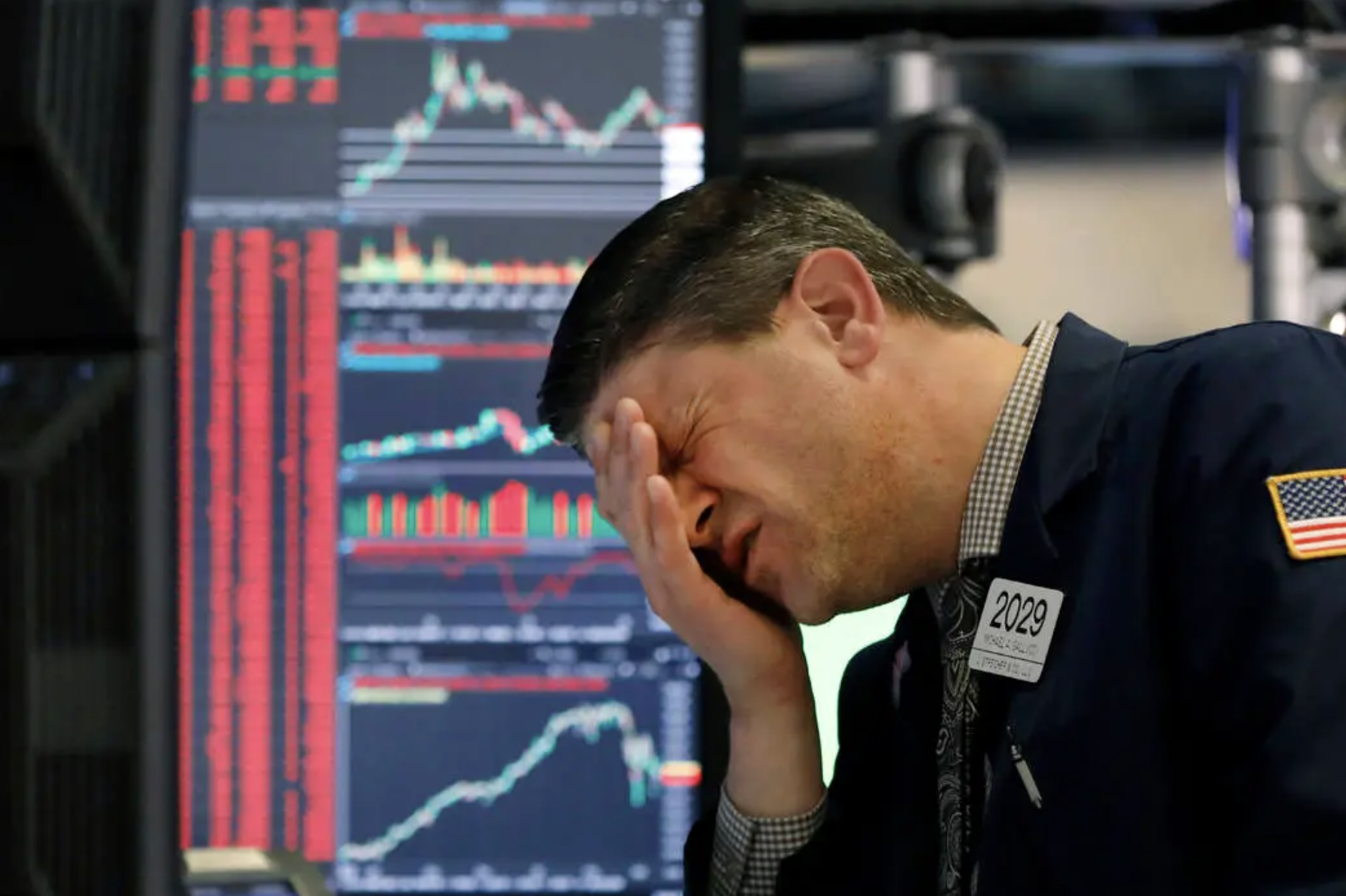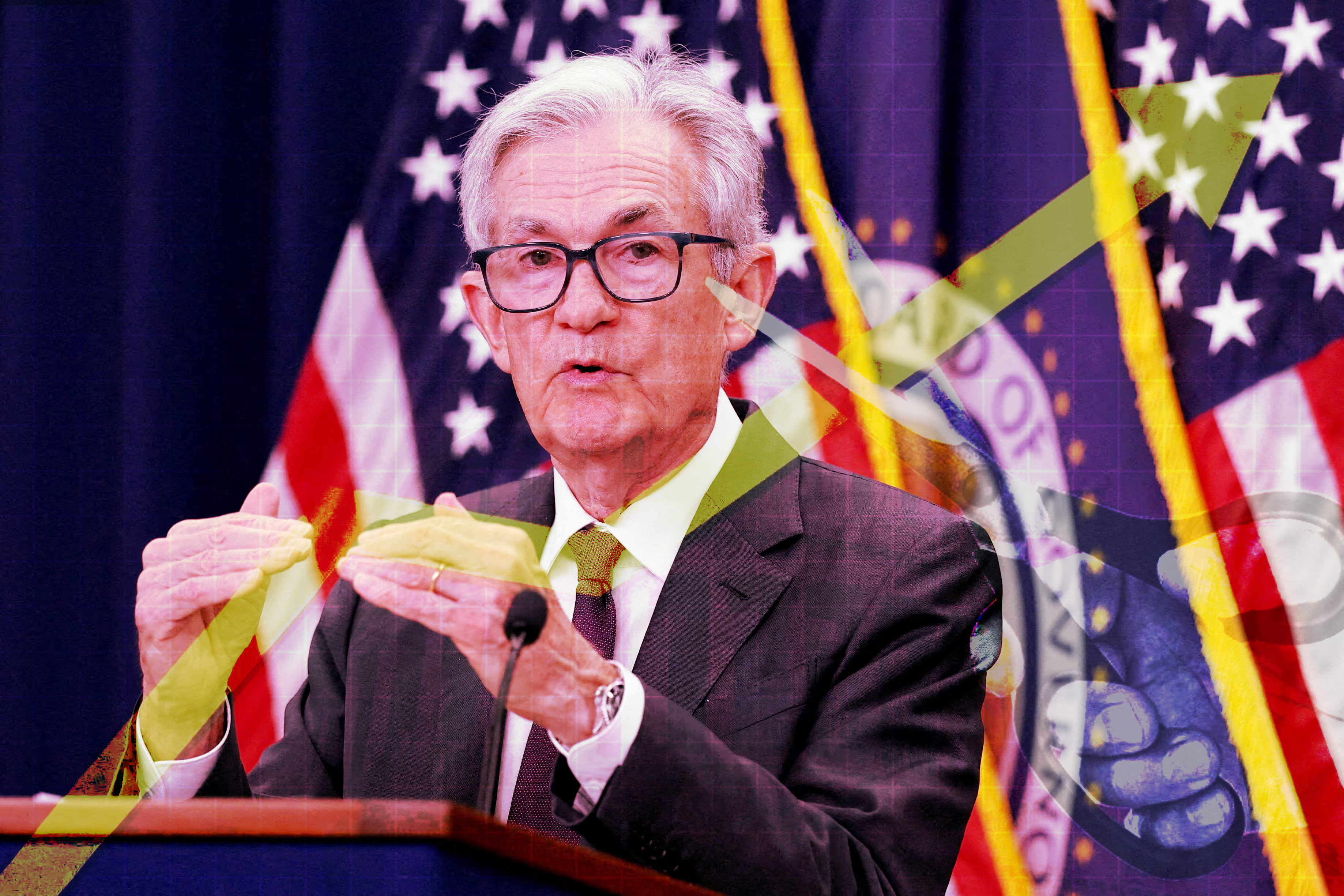The Fed Stuck Between A Rock And A Hard Place

- Markets are expecting multiple rate cuts from the Federal Reserve in 2024.
- DataTrek Research notes, however, that stocks plunged in 1987 after an aggressive move to ease policy.
- "The Fed knows the cautionary tale of 1985-1986 and, at lower absolute policy rates now, they have even more reason to be cautious."
Markets are looking for multiple interest rate cuts from the Federal Reserve in 2024, but history suggests severe downside for investors if policymakers fulfill those expectations before a recession strikes.
Fed funds futures show investors think odds are about 32% for interest rates to finish the year at 4.00%-4.25% and 37% odds for 3.75%-4.00%, a level that would represent five or six cuts to come over the course of 2024.
The Fed, on the other hand, has projected three rate cuts, according to its December 2023 Summary of Economic Projections, which would bring the benchmark rate to the 4.50-4.75% range by the end of this year.
"There is only 1 instance in the last 44 years when the Fed has cut rates by 1.25 points or more in a 12-month period without a recession either already underway or clearly in the offing," DataTrek Research cofounders Nicholas Colas and Jessica Rabe wrote in a note Tuesday.
The period in question was the 1985-1986 cutting cycle. The strategists pointed out that this policy easing cycle helped fuel stocks to massive rallies in both years, with the S&P 500 gaining 31% and 18%, respectively.
Not long after, however, rate cuts were followed Black Monday on October 19, 1987, when the S&P 500 crashed 20% in a single day, and the Dow tumbled 23%.
In short, there is no precedent for more than 1.0 percentage points of rate cuts without an imminent recession, according to DataTrek.
Stocks have already surged to start the year, which suggests the risk of overextending to unsustainable levels is high as it is.
To start the year, the S&P 500 has climbed 3.73%, the Dow is up 1.76%, and the tech-heavy Nasdaq has gained almost 5%.
"The Fed knows the cautionary tale of 1985-1986 and, at lower absolute policy rates now, they have even more reason to be cautious about the pace of rate cuts in 2024," Colas and Rabe wrote.




